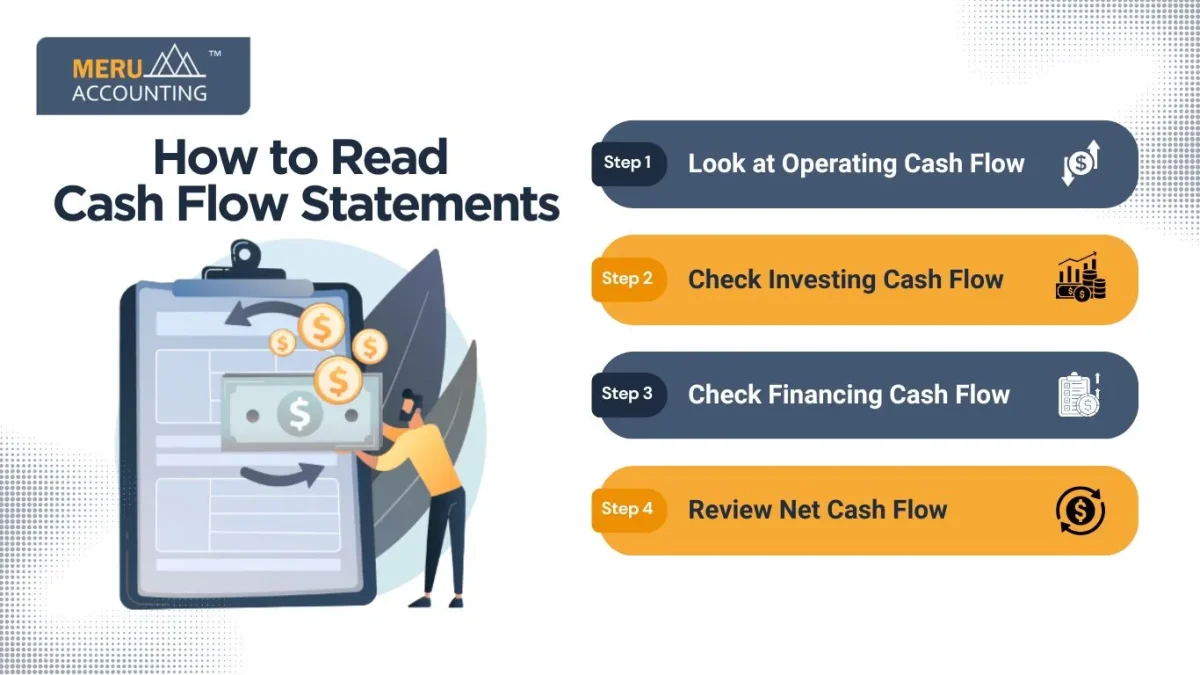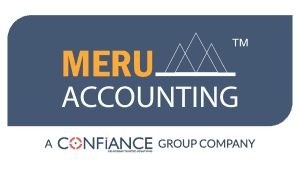Understanding Cash Flow Statements and How to Read Them
Cash flow statements are one of the most useful financial tools. They show how cash moves in and out of a business. Every owner or manager needs to know the cash situation. This helps avoid sudden money shortages that may harm the business.
Many companies focus only on profit numbers but forget about cash. This can be risky because profit does not always equal cash. Cash flow statements give a clear picture of real funds. They show the money available for payments, growth, and savings.
What is a Cash Flow Statement?
- A cash flow statement is a financial report used in accounting.
It records cash inflows and outflows for a set period. - It tracks how much cash the business receives or spends.
This shows if the company has enough money in hand. - It is one of the three main financial statements used today.
The other two are the balance sheet and income statement. - It gives managers and investors insight into actual liquidity.
Liquidity is the ability to meet obligations on time.
Importance of Cash Flow Statements
- Cash flow statements tell how much real cash the company currently has. This is vital for meeting both short-term and long-term needs.
- They help in checking if bills and suppliers can be paid.
A positive balance shows the company can cover its debts. - They show whether the company can fund growth and expansion.
This helps management plan projects with better confidence. - Cash flow statements are useful for both banks and investors. A strong report increases trust and helps secure financing.
- They assist in preparing accurate and reliable budgets.
This ensures better financial planning for future operations.
Key Sections of Cash Flow Statements
1. Cash Flow from Operating Activities
- This section shows cash earned from daily business operations.
It includes sales, service income, and supplier payments. - It subtracts the daily costs of running the business.
Examples include wages, rent, utilities, and raw material costs. - Positive numbers here show the business runs smoothly.
Negative values suggest the company may face liquidity issues. - Investors check this section to see real operating health.
Strong operating flow means the company can self-sustain.
2. Cash Flow from Investing Activities
- In cash flow statements, the investing activities section shows money used for buying assets or investments. It includes spending on land, property, and long-term projects.
- It also records cash received from selling investments.
Selling equipment or property adds to the cash inflow. - Negative numbers often mean the company is investing in growth.
This is normal if the firm expands operations or plants. - Positive values may mean asset sales or lower new spending.
Investors must analyze whether this is good or bad.
3. Cash Flow from Financing Activities
- In cash flow statements, the financing activities section shows cash flow from loans, shares, or dividends. It records money borrowed or paid back to lenders.
- Positive numbers mean more funds were raised from outside.
It can show loans taken or shares issued to investors. - Negative numbers mean repayment of debts or dividend payments.
This often reflects money given back to owners or banks. - Investors check this to see how funding is managed.
It helps judge debt control and capital structure decisions.
How to Read Cash Flow Statements
Step 1: Look at Operating Cash Flow
- Always check if the company earns from its core business.
Positive operating cash flow shows strong business performance. - If negative, the company depends on loans or outside money.
This can be risky if the trend continues over time.
Step 2: Check Investing Cash Flow
- See if the company invests in property, plants, or assets.
Negative numbers may show the firm is planning for growth. - Positive values mean asset sales or reduced investment spending.
Investors should check if this impacts long-term stability.

Step 3: Check Financing Cash Flow
- Look at loans, equity issues, and repayment activity.
Positive cash shows funds raised through loans or shares. - Negative values show repayment of obligations or dividend issues.
This is not always bad if debt levels are high.
Step 4: Review Net Cash Flow
- When reading cash flow statements, review net cash flow by adding operating, investing, and financing totals together. This shows the full cash position at the end period.
- Positive net flow means the business has gained cash.
Negative net flow means cash resources have decreased.
Why Cash Flow Statements Matter More than Profit
- Profit shows income minus expenses, but not cash timing.
A sale recorded as profit may not bring immediate money. - Cash flow statements focus only on actual cash received.
They exclude non-cash items like depreciation or credit sales. - A firm may show high profit but lack enough liquidity.
Cash statements prevent this confusion by showing real funds. - They ensure managers can make decisions with accurate data.
This avoids risky assumptions based only on profit margins.
Benefits of Cash Flow Statements
For Business Owners
- They help in managing cash for daily needs.
Owners can decide when to spend or save funds. - They show the timing of cash inflows and outflows.
This reduces stress when planning short-term operations.
For Investors
- They show the company’s strength in real cash terms.
Investors prefer firms with steady and growing cash flow. - They help in judging whether the firm can pay returns.
Strong statements build trust and attract new investments.
For Lenders
- Banks use cash flow reports before giving loans.
A good report shows the ability to repay on time. - It also helps decide interest rates and loan terms.
Lenders want firms with reliable and consistent liquidity.
Common Mistakes in Reading Cash Flow Statements
- Many owners focus only on profit numbers, not cash.
This mistake often causes sudden liquidity problems later. - People think negative investing cash is always bad.
But it often means the company is investing for growth. - Some ignore that financing cash may increase debt risk.
High borrowing can harm long-term business stability. - Others forget to link operating, investing, and financing.
Reading them together gives the full financial picture.
Direct vs Indirect Method in Cash Flow Statements
Aspect | Direct Method | Indirect Method |
Definition | Lists all major cash receipts and payments. | Starts with net income and adjusts items. |
Focus | Shows cash collected from customers and cash paid to suppliers. | Removes non-cash items like depreciation to reflect actual cash flow. |
Usage | Less commonly used because it requires detailed cash records. | Most companies use it as it is simpler and more practical. |
Advantage | Provides a clear view of actual cash transactions. | Connects profit with cash flow in a clear way and is easier to prepare. |
Tips to Improve Cash Flow
- Collect payments from customers faster using better terms.
This reduces delays and improves cash availability quickly. - Delay non-essential spending when cash reserves are low.
Always prioritize urgent and critical payments first. - Negotiate better deals with suppliers for extended terms.
Longer credit helps maintain a steady working capital flow. - Avoid over-investing in assets at the same time.
Spread out purchases to keep liquidity under control. - Keep emergency reserves for sudden cash shortages.
This acts as a safety net during financial stress.
Example of Cash Flow Statement
Let’s look at a simple shop as an example:
- Operating activities: Earned $12,000 from sales and services.
Spent $7,000 on rent, wages, and supplies → Net $5,000. - Investing activities: Bought new machines worth $2,500.
Net result here is -$2,500 cash flow. - Financing activities: Took a loan of $1,500 for growth.
Net result here is +$1,500 cash flow. - Net cash flow: $5,000 – $2,500 + $1,500 = $4,000.
The shop gained $4,000 during this reporting period.
How to Use Cash Flow Statements for Planning
- Check if the business can cover bills on time.
Cash flow ensures suppliers and staff get paid. - Plan future investments based on present cash status.
This avoids taking on excess debt for expansion. - Forecast cash shortages well before they occur.
Managers can arrange funds before problems arise. - Use reports to make balanced and safe growth choices.
This builds long-term strength and business stability.
Cash Flow Statements vs Income Statements
Aspect | Income Statement | Cash Flow Statement |
Focus | Shows profit but not actual cash timing | Shows only real money movement |
Inclusions | Includes credit sales and non-cash adjustments | Excludes items like depreciation and unpaid invoices |
Purpose | Highlights business performance and profitability | Highlights liquidity and ability to meet obligations |
Importance | Useful for measuring overall performance | Useful for tracking real cash availability |
Cash flow statements are essential for every business to understand. They show how money enters and leaves the company. Unlike profit reports, they reveal the true financial health. Owners, investors, and banks rely on them for decisions.
Meru Accounting provides expert services in preparing, analyzing, and managing cash flow statements to help businesses maintain financial stability. Our team ensures every report is accurate and easy to read. We provide expert support for planning, forecasting, and decision-making. With our guidance, companies can improve liquidity and avoid risks. Meru Accounting makes financial reporting simple, clear, and growth-focused.
FAQs
- What are cash flow statements?
They are reports that track inflow and outflow of cash. - Why are cash flow statements important?
They help businesses know their real cash position. - How many types of cash flow exist?
There are three: operating, investing, and financing activities. - What does positive cash flow show?
It shows the company earned more cash than it spent. - Can profit and cash be different?
Yes, because profit may include credit or non-cash items. - How often should they be prepared?
Most firms prepare monthly, quarterly, and annual reports. - Who benefits from cash flow statements?
Owners, lenders, and investors all rely on them.








